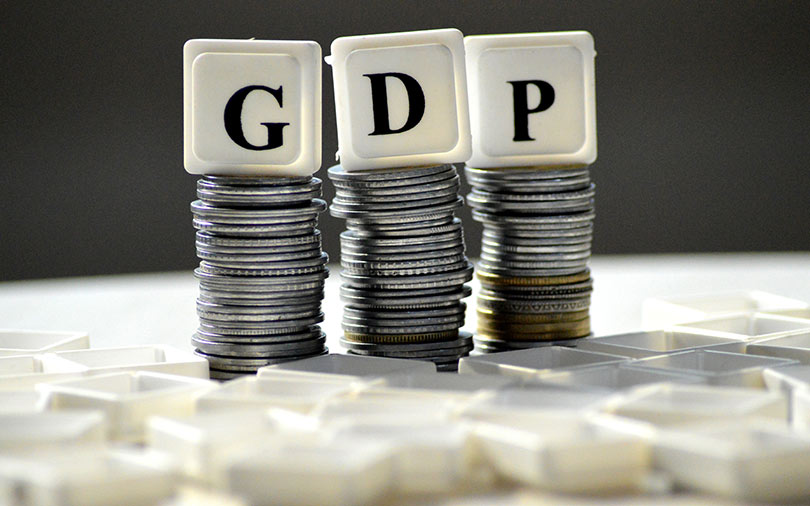
The Indian economy has grown by 6.3% in the July to September quarter, down from explosive growth of 13.5% in the previous quarter, as distortions caused by Covid lockdowns faded, but the Reserve Bank of India (RBI) raised repo rates to combat inflationary pressure, official data revealed on Wednesday.
Last year, the GDP growth rate was 8.4% in the July-September quarter.
The National Statistical Office (NSO), under the Ministry of Statistics and Programme Implementation, released the data on the quarterly estimates of the July-September period of the current financial year.
The growth rate was above the 6.2% forecast by economists for the quarter, the second of India's 2022/23 financial year, in a poll.
The data elaborated on the expansion of different sectors such as agriculture and manufacturing in the first quarter of this financial year.
The Central government's capital spending increased over 40% as the federal government stepped up expenditure on infrastructure from roads to railways.
Among key sectors, agricultural output rose 4.6% while manufacturing fell 4.3% and the employment-generating construction sector saw a 6.6% annual increase in activity.
Nominal GDP or GDP at current prices in Q2 FY23 is estimated at ₹65.31 lakh crore, as against ₹56.20 lakh crore in Q2 FY22, showing a growth of 16.2% as compared to 19.0% in Q2 FY22.
Views
"The Q2 FY2023 GDP growth of 6.3% came in similar to our estimate of 6.5%, even as the GVA rise of 5.6% trailed our forecast (6.3%) by a wide margin, led by an unexpected contraction in manufacturing that seems to reflect the impact of high input prices on margins in certain sectors" Aditi Nayar, Chief Economist at ICRA has said.
"At the same time, GVA growth in agriculture, forestry and fishing has been estimated at above 4.0% for the third consecutive quarter, which seems somewhat optimistic based on the decidedly mixed first advance estimates of the kharif crop, that were followed by unseasonally heavy rainfall towards the end of the monsoon season," Nayar said.
The ICRA Chief Economist also said, “GDP growth was boosted by the performance of private consumption expenditure and gross fixed capital formation, whereas government expenditure displayed a discouraging contraction in Q2 FY2023, on account of the modest de-growth in the Centre's non-interest revenue expenditure."
“With the Q2 FY2023 GDP growth only mildly below our forecast, we are retaining our estimate of the real GDP growth for FY2023 at 7.2%, although a deepening of the external slowdown poses a risk," Nayar added.
Nish Bhatt, Millwood Kane International, said, “The Q2 growth at 6.3% vs 8.5% YoY is largely in line with the consensus estimates. The stable growth rate is largely on account of robust GST collection witnessed in the past few months, and the fact that we witnessed lower imports. The GVA growth correctly reflects the slowdown in activities like manufacturing, mining, and construction."
Investors await GDP data
Shares closed at record highs for a fifth straight day today, extending their daily rally to seven days and logging a second straight month of gains, as investors cautiously awaited gross domestic product data.
Many analysts believed that the Indian economy will expand at a single-digit rate mainly due to the waning base effect.
Rating agency ICRA expected the GDP to grow at 6.5%, while the State Bank of India in its report pegged the growth rate at 5.8%.
The RBI in its bulletin pegged the GDP growth at 6.1 to 6.3% in the second quarter of this fiscal year.
The various GDP growth projections for the second quarter are either half or less than half of the 13.5% recorded in the April-June quarter this fiscal.
The country's gross domestic product or GDP is derived from the sum of the gross value added (GVA) at basic prices, plus all taxes on products, less all subsidies on products. The total tax revenue used for GDP compilation includes non-GST revenue as well as GST revenue.
Core sector output growth slows in Oct
Meanwhile, the growth rate in the production of eight key sectors slowed down to 0.1% in October against 8.7% in the same month last year, as per the official data.
In September, the core sectors' output growth stood at 7.8%.
The production growth of eight infrastructure sectors – coal, crude oil, natural gas, refinery products, fertiliser, steel, cement and electricity – was 8.2% during April-October this fiscal, compared to 15.6% a year ago.
In October, crude oil, natural gas, refinery products, and cement output recorded negative growth rate.